|
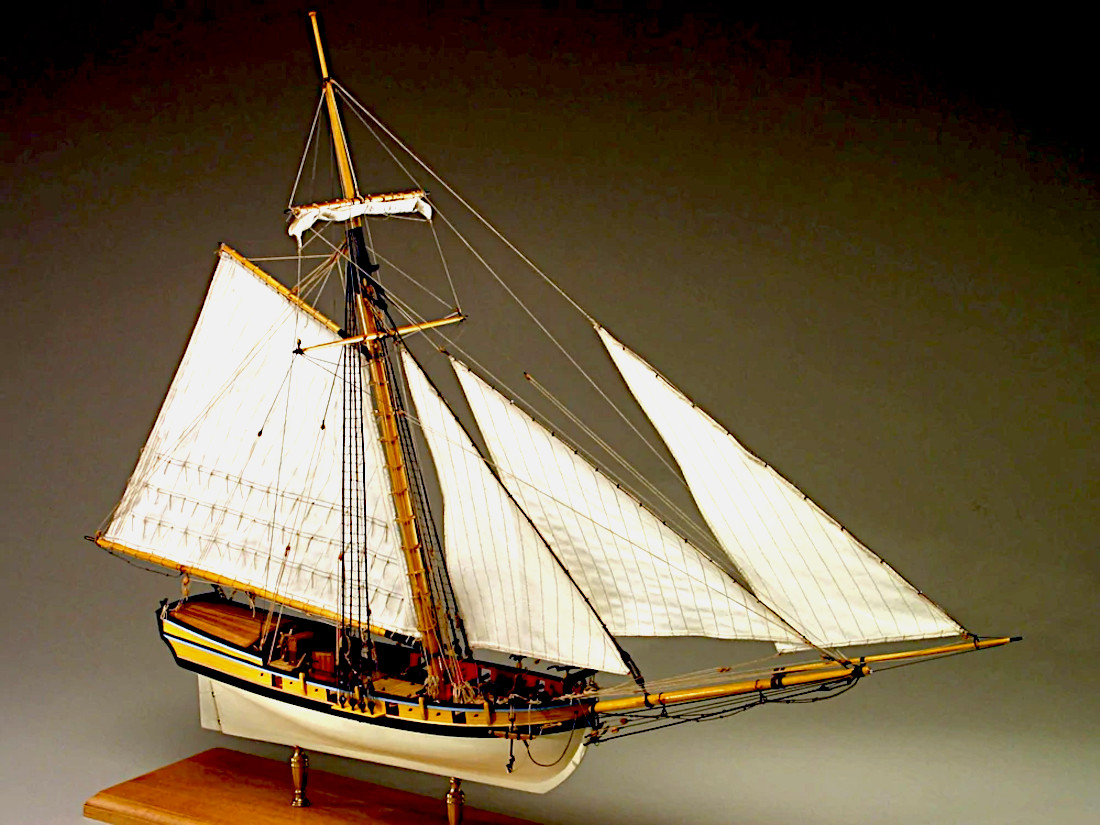
The
Adventure, 8 gun sloop
Edward
Teach (Thatch) or Blackbeard, captured a French slave ship known as La Concorde,
and renamed her Queen Anne's Revenge, a reference to the Spanish
War of Succession. He then equipped her with 40 guns, and crewed her with over 300 men.
He formed an alliance of pirates and blockaded the port of Charles Town, South Carolina, ransoming the port's inhabitants.
On hearing that the British had dispatched ships to capture him and his band
of cutthroats, he ran Queen Anne's Revenge aground on a sandbar near Beaufort, North
Carolina, where the ship suffered irreparable damage.
The Queen Anne's Revenge was a 200-ton vessel believed to have been built in 1710. She was handed over to Renť Duguay-Trouin and employed in his service for some time before being converted into a slave ship, then operated by the leading slave trader Renť Montaudin of Nantes, until sold in 1713 in Peru or Chile. She was briefly re-acquired by the French Navy in November 1716, but was sold by them for commerce five months later in France, again for use as a slaver. She was captured by Blackbeard and his pirates on 28 November 1717, near the island of
Saint Vincent in the
West
Indies.
Her
replacement was the Adventure, an 8 gun sloop.
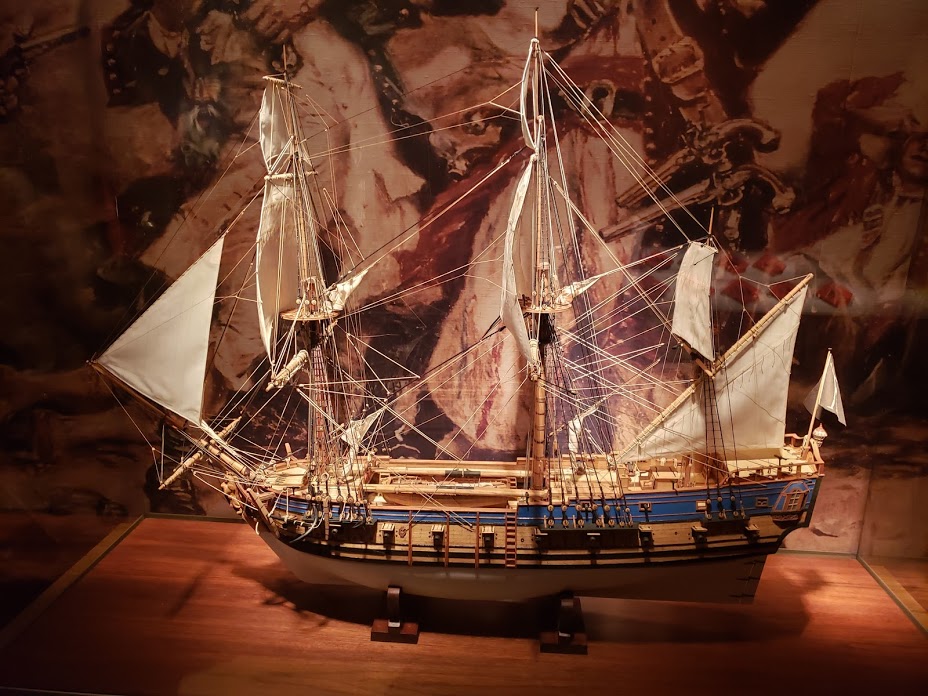
By April 1718, the pirates were off the Turneffe Islands in the Bay of Honduras. It was there that Blackbeard captured the sloop Adventure, forcing the sloop's captain, David Herriot, to join him. Sailing east once again, the pirates passed near the
Cayman Islands and captured a Spanish sloop off
Cuba that they also added to their flotilla.
Blackbeard had transferred to an armed sloop, the Adventure, with a greatly reduced crew. Lieutenant Maynard had about sixty men from the Royal Navy aboard his own vessels (which were guided by local pilots) as they slipped into Ocracoke Inlet on the morning of November 22, 1718. Raising the Union Jack aboard their sloops, the British sailors maneuvered to engage Blackbeardís vessel. Familiar with the waters, Blackbeard lured the Royal sloops onto a sand bar, where they temporarily ran aground. The pirate ship then unleashed a devastating broadside (with eight cannons) that tore into both of Maynardís vessels. In an effort to get off the sand bar, the crew aboard Maynardís vessel (Jane) jettisoned the shipís ballast. As Maynard steered toward Blackbeardís sloop (which had also run aground), the lieutenant ordered his men below decks in hopes of luring the pirates aboard the Royal sloop. As the ships drew alongside one another, the pirates threw improvised grenades onto the deck of Maynardís sloop. The rogues then threw out their grappling irons and boarded the Royal vessel.
Maynardís men swarmed up from below decks, and a bloody hand-to-hand struggle ensued. Lieutenant Maynard came face-to-face with his famous prey, amidst a flurry of pistol shots and flailing swords and cutlasses. Maynard shot the pirate captain, and British sailors swarmed in to finish the job. When the battle ended, Maynard counted five pistol shots and numerous severe cuts on Blackbeardís body. The surviving pirates (all wounded) either surrendered or jumped overboard. Casualties on both sides were significant, given the small numbers engaged. Maynard, himself slightly wounded, boarded the pirate sloop Adventure and discovered a number of important papers, including a letter to Blackbeard from Tobias Knight, the Secretary of the Colony of North Carolina.
Blackbeardís head had been severed, and his body dumped overboard. The Kingís men sailed to
Bath to repair their vessels, heal their wounds, and make contact with the British land force. Maynard then sailed the pirate sloop Adventure back to Virginia in late December. When Maynard dropped anchor on the James River in January 1719, Blackbeardís severed head was hanging from the bowsprit of the sloop he once commanded. Fifteen members of Blackbeardís former crew were eventually tried and executed in Williamsburg, Virginia, on the charge of piracy.
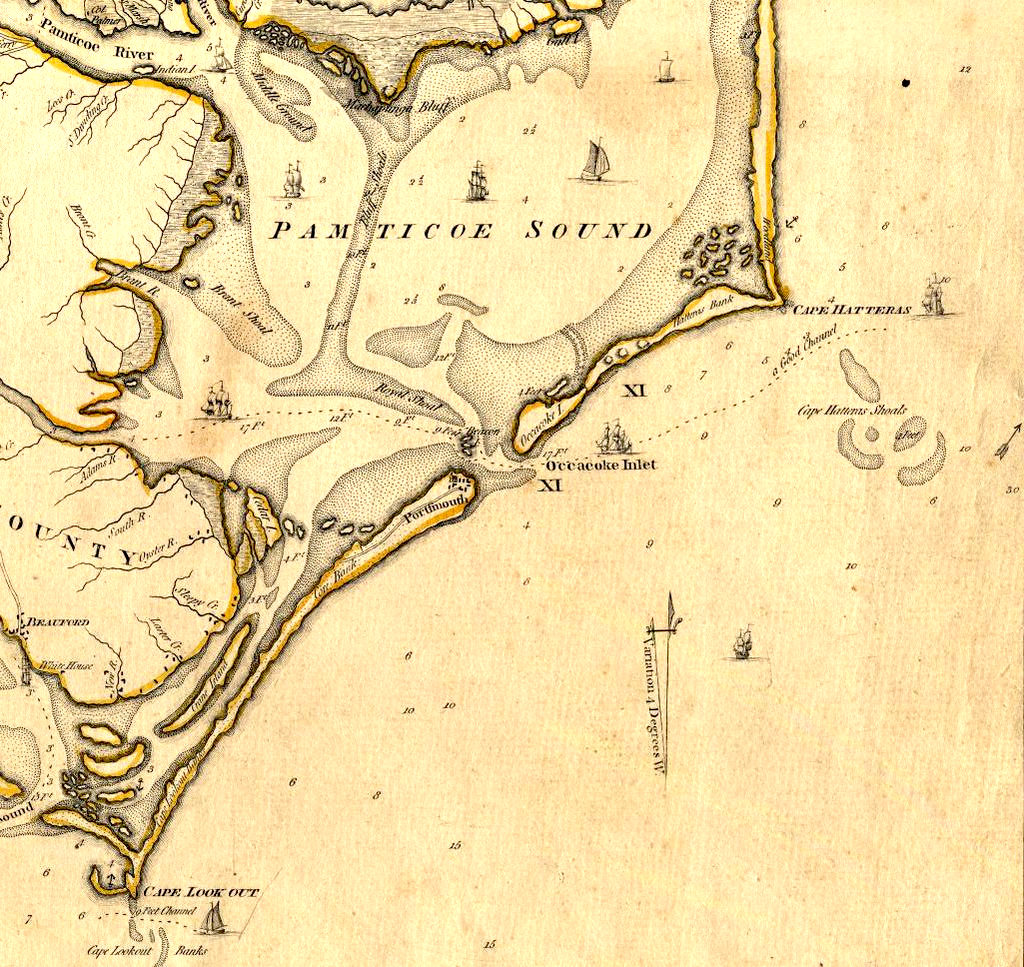
After Blackbeard lost the Queen Anne's Revenge and his 10-gun sloop on a sandbar in 1718, he removed his booty to the remaining ships and sailed to Bath Town in North Carolina. There he sold one of his two-remaining ships, keeping only one, an 8-gun sloop which he named Adventure.
Though he received a Royal Pardon, Blackbeard soon turned back to piracy. He sailed to the Bermudas, where he captured two English vessels. He emptied them of their stores and other necessaries, and allowed them to proceed. He also encountered two French vessels bound for Martinique, the one light, and the other laden with sugar and cocoa: he put the men on board the latter into the former, and allowed her to depart. Blackbeard brought the captured vessel into North Carolina, where he and the governor shared the prizes. The captured French ship was burned and left to sink.
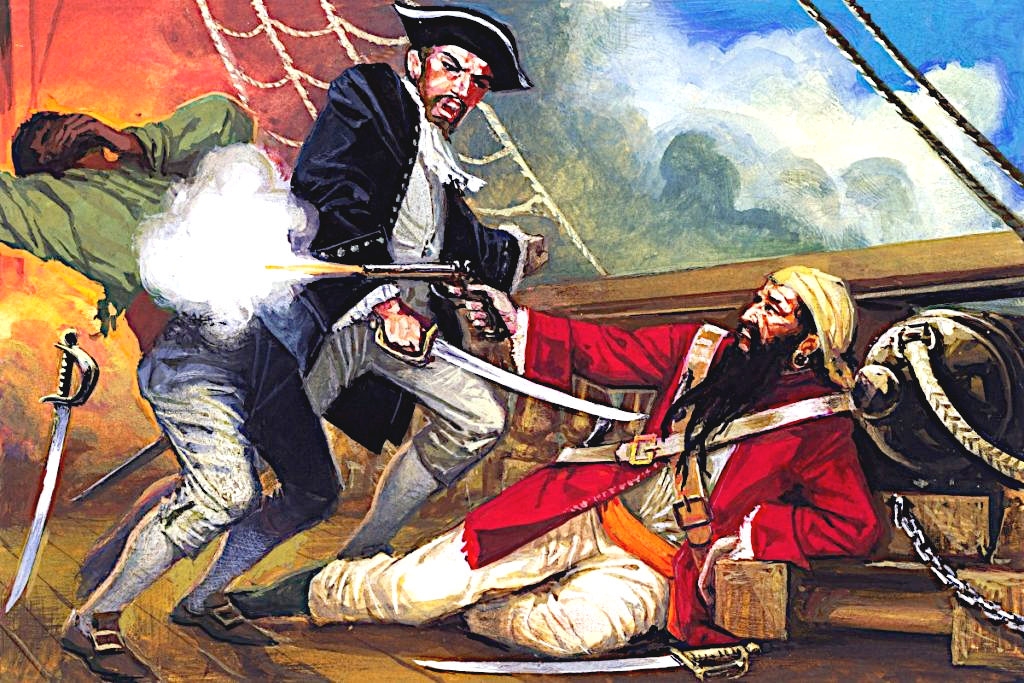
Aboard
the Adventure in 1718, Lieutenant Robert Maynard shoots and kills Blackbeard,
who cursed the navy officer and his crew
A few months later, the Adventure was moored off the coast of Ocracoke island. That was a fatal mistake. The Ocracoke Inlet had but one exit to open sea. On the evening of November 21, the two sloops appeared, flying the British flags. The sloops were the Jane and the Ranger, crewed by the British Royal Navy sailors, and commanded by Lieutenant Robert Maynard, who was sent by the governor of Virginia to capture Blackbeard.
Blackbeard cut his anchor cable and quickly attempted to move towards a narrow channel. However, his sloop ran aground. In the ensuing battle, the British crews suffered heavy casualties, but they defeated the pirates, capturing the Adventure. Through an unknown circumstances, Blackbeard managed to escape. But legends about his death in the battle soon arose, one of them saying that he was decapitated, and that his headless body swam three times around the Adventure and climbed back onboard. Many years later, the legend of Blackbeard climbing on board this ship would be mentioned by Jack Sparrow, who confronted the infamous pirate aboard the Queen Anne's Revenge.
"And what of you? The mighty Blackbeard. Beheaded, they say. Still, your body swam three times around your ship, then climbed back onboard."
― Jack Sparrow to
Blackbeard
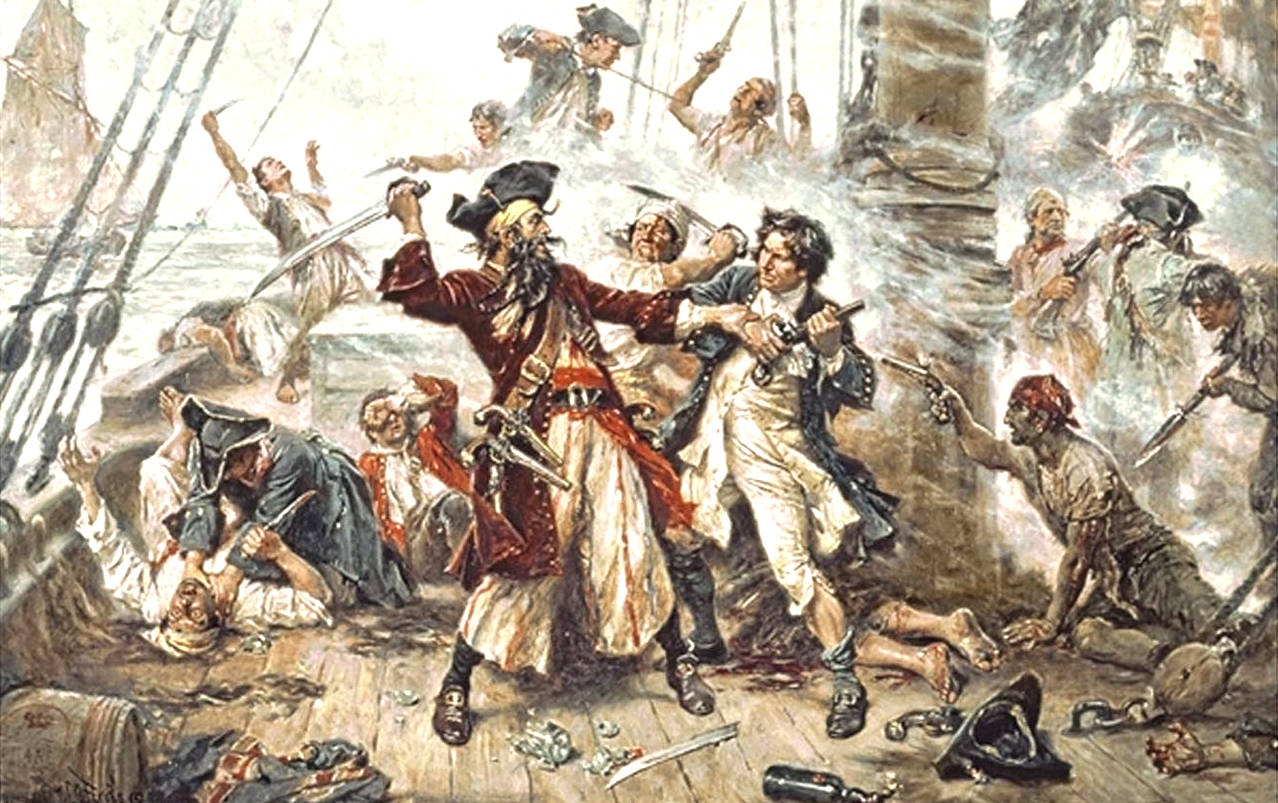
The Adventure was a sloop that sailed in the Caribbean in the 1710s. She was captained by the infamous pirate Edward
"Blackbeard" Teach. Blackbeard
was one of the most feared pirate captains operating in the Caribbean Sea.
When he resumed pirating, the British made it their business to capture him
as an example to other would be renegades. In battle, Blackbeard was a savage opponent with a reputation for inhuman strength. He cultivated his image to strike fear into the hearts of other sailors, wrapping slow-burning lighted coils in his long, black hair and beard.
|




